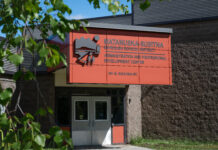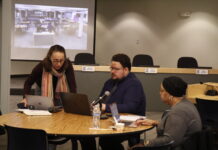
A recent survey of high school students in the Kodiak Archipelago looked at risk behaviors in the student body. That includes things like drugs, suicide rate and violence. This year, almost 500 of roughly 600 high school students in the Kodiak High School and island community schools answered the Youth Risk Behavior Survey.
Educators can get a little nervous when they see numbers representing the student body on a page, but Kodiak Island Borough School District Superintendent Larry LeDoux says they were already nervous.
“We don’t need these statistics to tell us what we worry about,” LeDoux said. “We worry about drugs. We worry about knives. We worry about any kind of weapon. We worry about suicide. We worry about students feeling like they don’t belong.”
The survey questions cover a lot of ground, from the frequency a student drinks soda to whether or not they’ve brought a weapon to school in the last month.
“Anything above zero related to weapons in schools is a statistic that we don’t like, and that’s the bottom line,” LeDoux said.
The percentage is above zero, and it’s roughly twice the state average – 20 percent compared to 10 percent.
LeDoux thinks it’s possible, but unlikely, that students are regularly bringing weapons to school. And it depends on what the student considers a weapon.
The question gives specific examples – a knife, gun or club – and high school principal Mel LeVan takes issue with that.
“The question lumps pocket knives and firearms together, which is really a poorly administered question,” LeVan said. “If I really believed that it reflected anything like the number of firearms being brought into the building – I mean, that would be an immediate crisis, obviously.”
Other statistics stand out. For instance, the percentage of Kodiak students who reported having used heroin once or more in their lives is higher than the state average, and marijuana use is lower, as is the rate of suicidal thoughts.
The Alaska Department of Health and Social Services conducts the survey every other year. The survey is voluntary and a proctor oversees it in classrooms.
When it comes to changing the numbers, both LeDoux and LeVan emphasize prevention and spreading awareness.
Director of Student Services Ron Bryant, who coordinated the survey locally, agrees, and he believes peer-to-peer education could be the most effective way of doing that.
“In working with the student governments, they may have some ideas,” Bryant said. “Or there’s a bunch of different PSAs and other things which students could use to get the message over to other students and, again, I think that’s more effective than hearing it from adults.”
Administrators and students have some time to do get the word out and see if it makes a difference in the numbers before the next time students take the survey in 2019.
Kayla Deroches is a reporter at KMXT in Kodiak.




